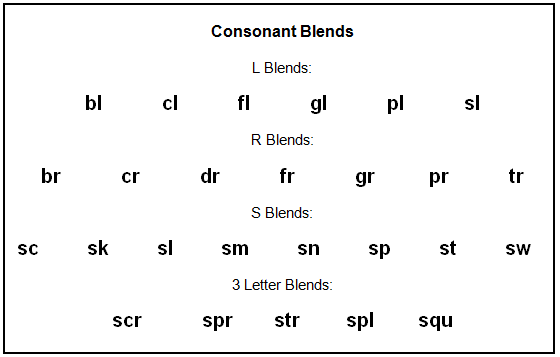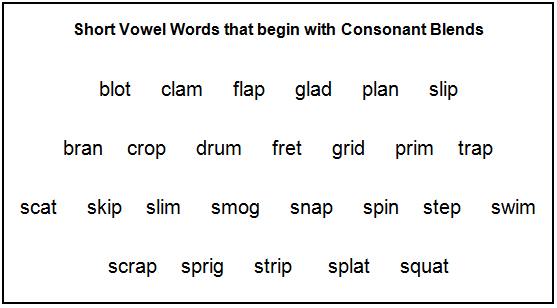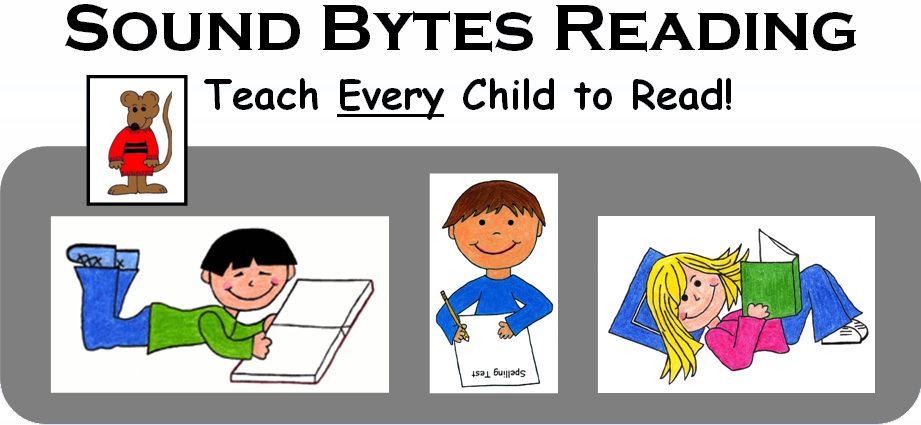Diagnosing Children with Reading Problems – Part 2

You can diagnose where your child begins to have difficulty with reading and you can help your child overcome these difficulties. Last week I talked about these first three steps:
1. Does your child know the consonant sounds?
2. Does your child know the vowel sounds?
3. Does your child read by decoding words or sight read?
If your child knows the consonant sounds and the vowel sounds well, and can read short CVC (consonant-vowel-consonant) words easily, then you can go on to the next step. This week we will talk about the next step you can take to further diagnose your child’s reading difficulty.
4. Can your student read short vowel words that contain blends? If your child can read all of the word lists in the previous blog post easily and accurately, ask him/her to try reading these words:

This will tell you if your child has difficulty reading short vowel words that begin with blends. If he/she cannot read these words quickly, easily, and accurately without help you will need to teach blends.
Do not teach blends to your student until he/she is skilled in the three steps of decoding words that were discussed last week.
Below, you will find a list of initial consonant blends, from the reading program, Sound Bytes Reading – Teach Anyone to Read. Help your student learn to sound out the blends in isolation, and then practice sounding out the short vowel words that begin with blends. Next week, I’ll discuss Step 5, reading words with long vowel sounds.


